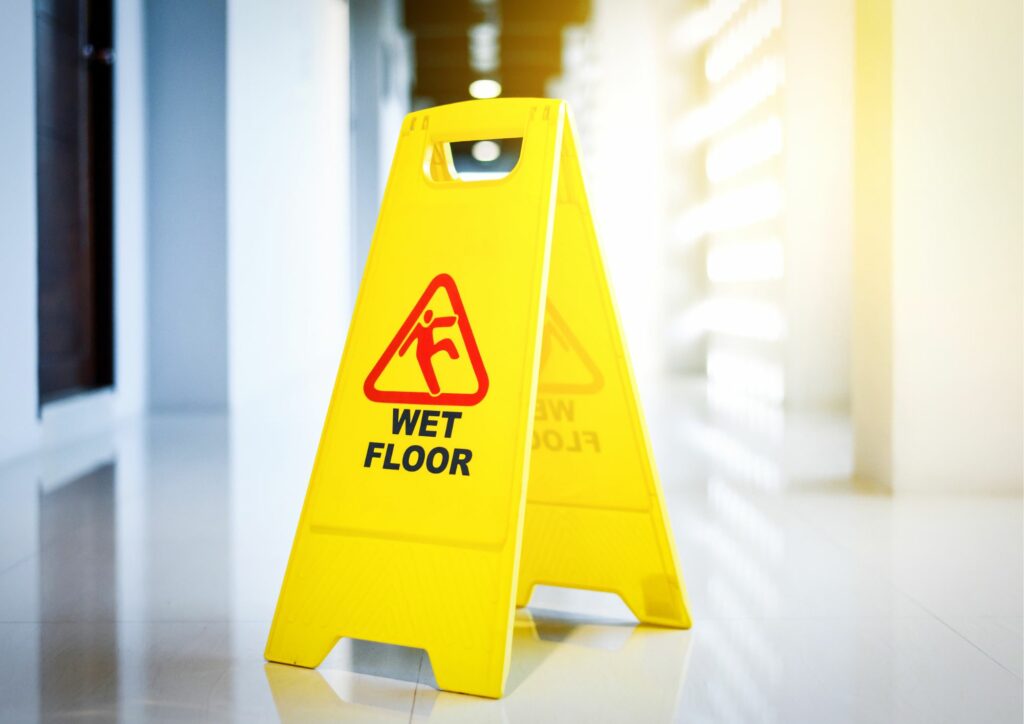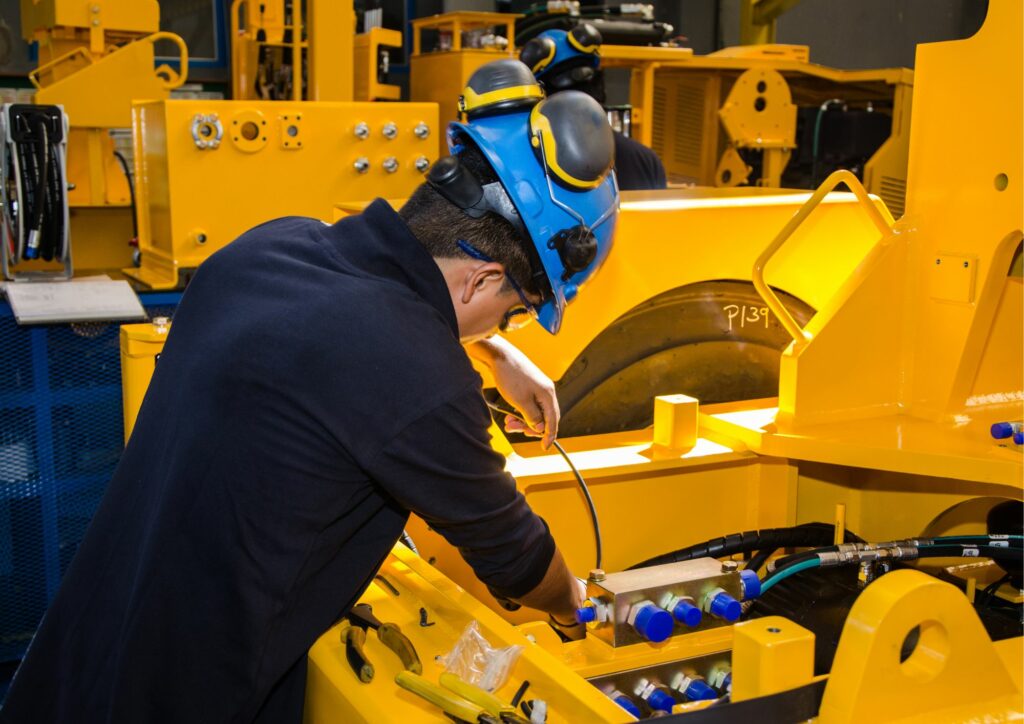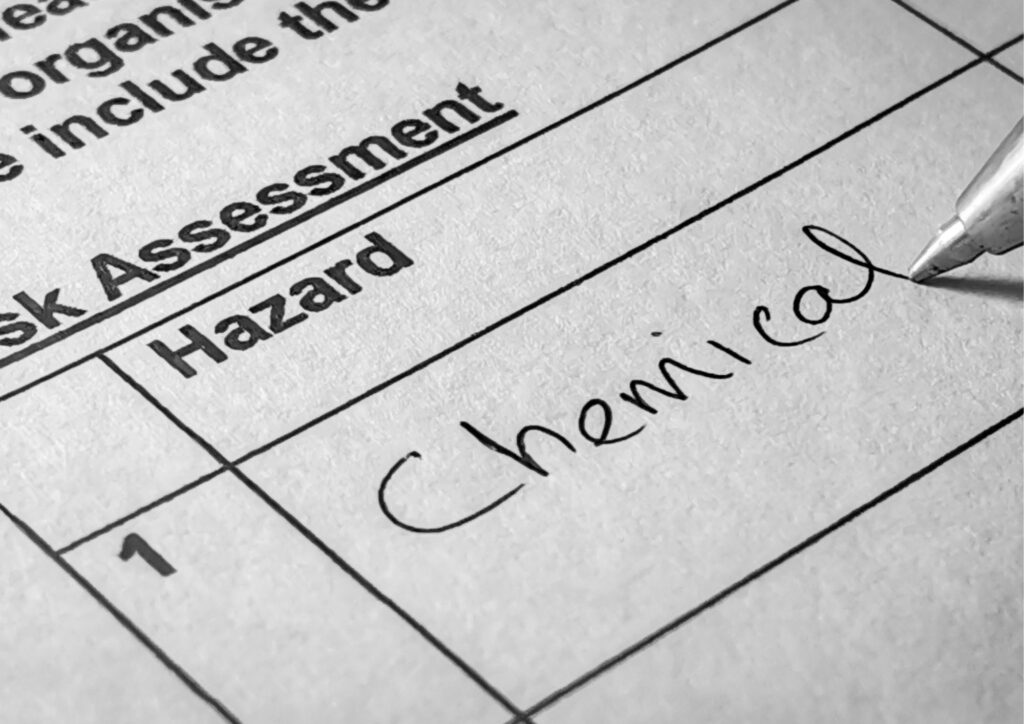Accidents At Work: Common Examples & How To Avoid Them

As much as we try to avoid them, accidents at work do happen. Some workplaces may have more risks than others, for example construction sites, but there are plenty of examples of accidents at work that show they can happen anywhere. Accidents at work can result in minor injuries or serious, life-changing ones. It is of course important to know what to do if an accident occurs in the workplace, but first and foremost we should look to minimise the chance of them happening at all.
Examples Of Accidents At Work

Examples of accidents at work vary depending on the industry and the environment. Some industries are considered more dangerous than others, for example manufacturing where employees are in close contact with heavy machinery, or sporting professions where injuries are commonplace. When completing a workplace risk assessment, identifying hazards is the first step towards reducing the risk of accidents happening.
Slips, Trips And Falls
Slips, trips and falls can happen anywhere, be it in a busy restaurant or even working from home. Slips could be minor bumps in an office or more severe falls from heights on a construction site. Making sure that walkways are clear and free of any obstructions and ensuring hazards like wet floors are clearly marked up can help to avoid anyone in the workplace suffering a slip, trip or fall, no matter how minor.
Fire And Electrical Accidents
Fire safety is an essential component of any health and safety policy. Burns can happen in restaurants or hotels where people are handling boiling water or even in hair salons with appliances like hair straighteners. These are less serious examples of accidents at work from fire or electrical hazards and minor burns can usually be treated quickly and will heal themselves in time. In the event of a fire breaking out, burns and smoke inhalation can be life-changing or even fatal. This is why all workplaces should have an appointed fire marshal and should check their fire escapes regularly.
Cuts And Lacerations
Accidents in the workplace can range from a small cut that requires nothing more than a plaster to very serious lacerations and even amputation. For industries that operate heavy machinery or vehicles, there is an increased risk of injury. Workers in the manufacturing sector, for example, are more likely to experience contact related accidents at work because their job involves operating equipment like laser cutters or mixers. Employees in the food and beverage sector regularly use knives which can result in cuts, and even office based professions using paper cutters can get minor cuts.
Machinery

Machinery related accidents at work happen most often in factories and warehouses where machines, including forklifts and pallet trucks, are used daily. Even with proper training and well-maintained machinery, accidents can happen. This can be down to user error or problems in the environment, such as obstructions blocking pathways or staff shortages that increase pressure on workers’ output. Having safe systems of work in place can help mitigate these risks as can maintaining all vehicles and equipment in line with health and safety regulations.
Chemical Exposure
There are a number of risks involved with working with chemicals. Chemicals can cause skin irritations, serious chemical burns or respiratory illnesses like asthma. Some chemicals are also carcinogens which can cause cancer. Accidents in the workplace involving chemicals can arise from mishandling of chemicals, equipment failure, improper labelling and spillages. Staff should be trained on the correct use and handling of all chemicals and protective equipment should be worn to reduce the risk of accidents at work involving chemicals.
The HSE has detailed legislation around the use of chemicals at work because of the serious health implications if an accident occurs.
Accidents at work are, by their very nature, unpredictable and the accidents themselves vary greatly. The list of examples of accidents at work is extensive, as are the causes. These are the most common types of accidents in the workplace, but owing to the type of business and the nuances of the industry, the hazards to include in a risk assessment will be different for each business. This is why health and safety training is specific to the industry you are in, to ensure that all possibilities in your sector are accounted for.
Avoiding Accidents At Work

As hard as we try to stop them, accidents at work are a risk in any working environment, and of life in general. Despite all measures taken, sometimes things do not go to plan. However, it is still imperative that all workplaces are as safe as possible and that employers take responsibility for the safety of their employees. This means making sure there is a robust health and safety system in place, including a detailed risk assessment, fire safety training and, especially for high risk jobs, clear method statements.
Industries with multiple hazards that could cause serious injury, such as groundworks or warehouses, should have thorough health and safety measures supported by the correct documentation. Any accidents will need to be meticulously investigated to reduce the risk of a recurrence.
Preparing for all eventualities and being aware of all potential accidents at work, plus knowing what to do if they do happen is vital for all workplaces, and is the first defence in stopping accidents at work happening at all.
Health And Safety From Rhino Safety
Thinking about all of the potential accidents at work can be daunting. The likelihood is that any accidents will be minor, and with proper health and safety systems and staff training, risks are reduced as much as they can be. The experts at Rhino Safety know everything there is to know about health and safety in your industry and can take care of every detail and every risk assessment, to provide your workers and workplace with all the tools needed to stop accidents at work from happening.
Contact us to find out how we can help you and your team with a rigorous and bespoke health and safety system.
